- Seller: Erik G
- Location: Visalia, California
- Mileage: 0 Shown
- Chassis #: See Below
- Title Status: Clean
When you consider how difficult it is to begin restoring a project belonging to an obscure or otherwise extinct nameplate, it’s of little surprise that these orphan makes can be passed over for restoration. However, when you come across a seller that has done the hard work of building a small arsenal of spare parts, along with securing several restoration-worthy project vehicles, that reduces the burden significantly. That’s certainly the case with this assortment of DKW projects featuring five rare project vehicles along with an incredible treasure trove of spare parts to support future restoration activity, including this 1953 DKW F91 Cabriolet that Audi Tradition in Germany confirms (the owner has a letter from Audi Tradition) as the DKW display car from the 1953 Frankfurt International Auto Show, and likely the oldest one in existence. The caretaker is listing it, along with the other four vehicles and all accumulated parts, here as a Barn Finds Auction!
The seller provides some great context for how truly special this four-seater cabriolet is. It’s a first-year production model, and relatively few examples are believed to exist. What’s even more fascinating is how novel the DKW was from an engineering standpoint. This convertible is considered a F91, which is the destination given to the earliest production DKW 3=6 models. The DKW featured a two-stroke, straight-three engine driving the front wheels. DKW’s marketing department hoped buyers would understand that their 3-cylinder engine was comparable to a 6-cylinder. Therefore, 3 equals 6. Let’s review the four-seater convertible, front-wheel drive, and a three-cylinder, two-stroke engine. Not many cars have those features on their resume. Throw in the provenance of it being the 1953 Frankfurt International Auto Show display car, and you have an extraordinary vehicle.
There is also this 1955 Sonderklasse 2-Door model, which appears to be largely intact. While we may find the performance relatively puny by today’s standards, the DKW models were considered quite sporting when new. They were frequently used in competitive driving events and had many world-class racers sitting behind the wheel of a DKW. The likes of Fangio, Clark, Brooks, and others all drove DKWs of some variety to great success in vintage racing, and DKW models like the Monza were known for their dominance in endurance driving events where maintaining a constant high level of speed was a strong suit for the obscure European brand.
But was it truly obscure? By today’s standards, yes, but not at the time. As one of the world’s predominant motorcycle manufacturers, DKW was well known for its engineering prowess related to two-stroke engines. Its strategic acquisition of Audi Werke AG was likely a breakthrough for the company, as it suddenly had access to high-volume production capabilities for a lineup of front-wheel drive vehicles – and quickly became a dominant manufacturer in Europe. It makes sense then that DKW was known for models like the coupe and convertible shown above and models like this 1957 DKW 8-seat window bus. The seller notes that he has three vans in the collection, all of which are windowed models, but the two buses are very special as they have curved glass in the rear corners.
Much like a 23-window Volkswagen Samba, the window count and curved glass make a difference in desirability. Still, the parallels between the DKW and a similar-era VW Bus are limited to the significance of glass panels. You can get into a DKW window van for much less than a VW Transporter or barn-door van while still getting all of the eyeball appeal these compact 8-seaters have when in finished form (check out this previous Barn Finds article showing a DKW window van with loads of period-correct patina). The seller notes that over nearly 20 years of ownership, these project vehicles (except the window van without curved glass) have been stored inside weatherproof shipping containers in the dry central valley of California.
If you’re going to go head-long into a collection of vehicles like this one, almost as important as the vehicles themselves is having the parts necessary to keep them on the road. The seller has done an incredible job of amassing what is likely one of the largest DKW parts stashes here in the United States. A few years ago, when I unloaded a similar parts stash from a defunct Peugeot dealership, I was amazed at how many small and seemingly inconsequential parts went on to find new homes with enthusiasts who had been looking for some fastener or piece of hardware that had been impossible to track down; I am sure this assortment has some real gems in it of DKW parts the world has assumed would never be seen again.
This is an incredible opportunity for anyone interested in forgotten European brands and potentially gaining access to some genuinely elite circles of the car-collecting realm. The F91 Cabriolet is a special find, even in Europe, but especially in the States. While all these vehicles will need restoration and re-assembly, finding this many DKW models and spare parts in one collection is a rare opportunity. Even if you eventually sell some of the cars and spares to recoup some of your investment while holding onto the rare convertible model, this DKW collection offers the vintage European car enthusiast plenty of options going forward. Thanks to the seller for listing with Barn Finds, and good luck to the bidders on this impressive DKW package deal. You’ll find a complete list of the cars in the package with their VINs, photos and videos below.
1953 DKW F91 Cabriolet VIN 64500013
1955 Sonderklasse (“special class”) 3=6 F91 Coupe (Early suicide doors, pillarless coupe) VIN 66561927 with CO title
1958 DKW Schnellaster (translates as rapid transporter) — Windowed Van VIN 22519477
1957 DKW Schnellaster — Windowed 8 Seat Bus (Rare curved rear corner windows) VIN 22508026
1958 DKW Schnellaster — Windowed 8 Seat Bus (Rare curved rear corner windows) VIN 22512196 with CA title
Documents
Old Photos

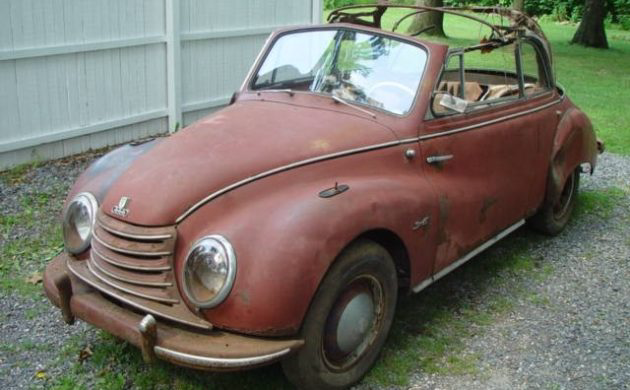






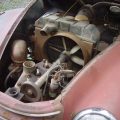

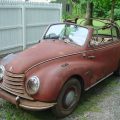

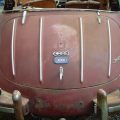
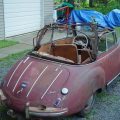
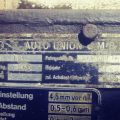
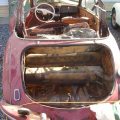




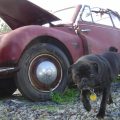



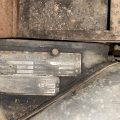



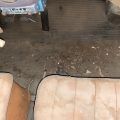


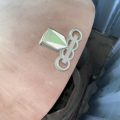
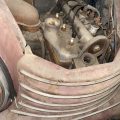
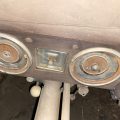





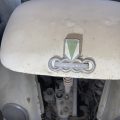
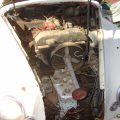


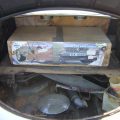

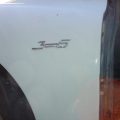










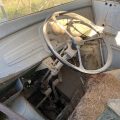
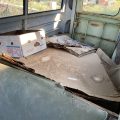
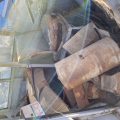

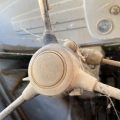

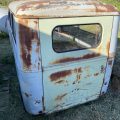
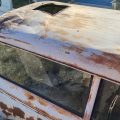


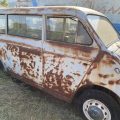
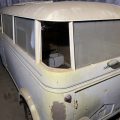
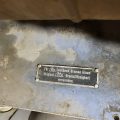






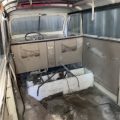
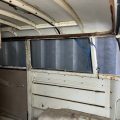
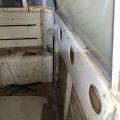


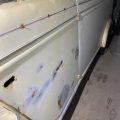






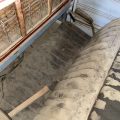

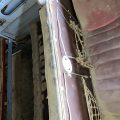
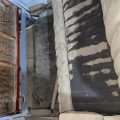
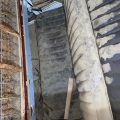


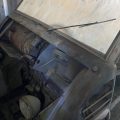

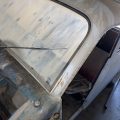











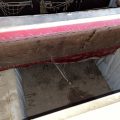

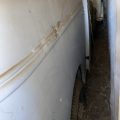


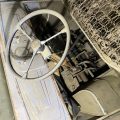
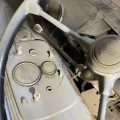

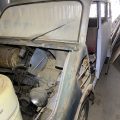
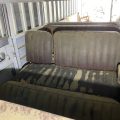


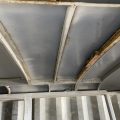



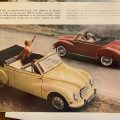
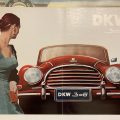










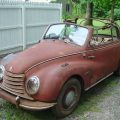

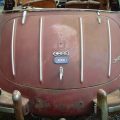




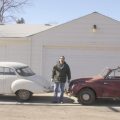

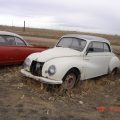
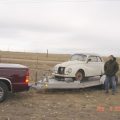


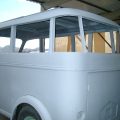



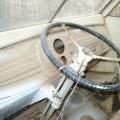











Hello, I am the seller. Feel free to reach out with any questions. Thanks!
What’s the Reserve may I ask ?
We don’t the reserve before it is reached because the seller may decide to lower it near the end of the auction.
Cool cars and great that they have survived.
Super unique collection. Hats off to the seller!
Hello Peter,
I will be restoring a 1953 DKW sedan wagon which I bought many years ago. I will be needing parts for the engine. Will your parts be available should you decide not to sell.
I am located in Saugus Ca. not too far from you.
Thanx,
Roy
A Sonderklasse was Jimmy Clark’s first race car; the Border Reivers team had one which he raced at Crimond, I believe. Safely out of sight of everyone that might object!
Wow, this is about the most concise BF classified to come down the pike. A guy in town, a lawyer, I believe, has an eclectic collections of cars, mostly imports, and once, brought a, what’s it called?, The 1st one, and had a thunderbolt call-out on the side. I figured the car was converted to electric.
The “3=6” is a hefty claim, but no 3 cylinder in my universe could ever hold a candle to a 6, but given the Germans due, they may never have heard of the “Super Slanty 6”, but that’s how I see it.
Quirky things, not sure our good old boys will see it as anything valuable. I know the vans bring some attention, but strictly as a novelty, not unlike the Fiat Multipla. Again, a collection of this magnitude, was clearly from an immigrant that came here, bringing a shred of the old country with them, but those folks are gone now, and a collection like this, and a impressive collection at that, will be a tough sell, here, anyways. I bet a collector in Europe would, no SHOULD be all over this. The fact it isn’t gone, tells me interest around the world is waning.
Hello, and thanks for the comments. Re the 3=6 designation, keep in mind these are 2-stroke engines, so they pump out a lot of torque w/o a lot of cylinders/displacement, and they also rev very high. Re the vans, note that a few years ago a nicely restored van sold for $100,000 at a Gooding auction
https://www.goodingco.com/lot/1956-dkw-schnellaster-kastenwagen-36/
Vans were often used a service/delivery vehicles due to their flat floors (no transmission tunnel).
Also, I think DKW vehicles were more common than we think in the US during the 50’s and 60’s. My parents for example tell me of various people then knew on the west coast that used them as family cars, etc.
well given the same number of crank revolutions, both the DKW three and a six-banger fire the same number of time!
This is one of those times where I’m really glad the opportunity is 3000 miles away. The Cabrio alone would be worth the time spent on it. Great lines, and something truly special, without being ridiculously expensive, for the local car shows and coffee meets.
Add in the allure of the two stroke and it’s almost too much to resist.
Here’s a F91 cabriolet in the Audi museum.
There is a German chap who travels nearly every year in his beautiful DKW from his home in Germany to Ireland to participate in classic car shows. There are quite a few DKW classics in Ireland, probably due to the fact that DKW built many of their cars in their Irish factories.it may have been Dublin or Cork, either way they are lovely cars and so much rarer and nicer than the VW Beetle
Selling auction style may not be the best way to move this collection. Do a buy it now with as much advertising as possible. Just my 2 cents, debatable as it may be.
My old dad was stationed in Addis Ababa in the early 1960s and DKWs were popular and plentiful there. Several friends of the family had them, but I never got a ride in one. I can still the hear the burbling sound of the 3 cyl, 2 stroke engine in my mind when someone mentions DKWs.
You can relive the high-rev burbling here, enjoy!
https://www.youtube.com/watch?v=SoWjumKD7I0
https://www.youtube.com/watch?v=IbSM-h_nmi8
High school job, a sedan was our chicken delivery car. It was a hoot to drive
I recall watching Stanguellini/DKW Formula Junior monopostos running in SCCA events in the early 1960’s. That 2 stroke 3=6 engine delivered a great sound accelerating and screaming along the backstretch of a track.
The coupe and convertible are really attractive cars but I fear the logistics of getting all these partial bodies and parts to a new location will be the thing that inhibits some from bidding. I wish him well, though. All it takes is one buyer that really wants it.
Hi Bob, There’s more than one tractor available that can pull the vehicles out from their storage spots, and also be used to load a vehicle onto a trailer. This worked great with another DKW van that I sold (see photo). Basically, we’ll be able to help with moving things off the property…via a combination of horsepower and manpower. The property where it all lives is flat and the ground is hard dirt, so there’s no trouble with getting vehicles to roll. Thanks!
Didn’t even know that these existed. Very interesting and hope they get into the hands of someone who will restore them. Part of what makes BF great is the education regarding orphan and rare makes.
Not a lot of these remaining in the States, but there’s still quite an active following in Brazil, S. Africa, and of course parts of Europe. The club in the U.S. has a newsletter called The Blue Cloud and the DKW Club of America can be found here http://thebluecloud.org/
Check out this online article on defunct German car brands…
https://www.msn.com/en-us/autos/enthusiasts/the-great-dead-german-automakers-you-ve-probably-never-heard-of/ss-AA1gVWq7?ocid=entnewsntp&pc=U531&cvid=32e4b3f4b1e04a08b2d864f0d190eb59&ei=12#image=1
Beautiful cabriolet, same original color as the one for sale here
da muss ich glatt drüber nachdenken die Autos heim zu holen …
Seems to me you are thinking about how to get everything back to Germany? That would be a great journey to document! As a reminder, there’s a tractor and other equipment on the property that can help pull the vehicles from their existing storage to make it easy to load them on a truck, etc.
I have to say, people are awesome. Think about this: It’s one thing to have a collection of Ford vehicles and a parts stash in the US; but the owner must really have had a passion, obsessions, or simply enjoyed the hell out of having this collection. I’m pretty sure that there aren’t many, if any, similar collections in the the US.
I’d be curious to find out how the owner got started/involved with this, and some of the stories about getting the cars and parts…
Hi Jonathan,
About 25 years ago we took a trip to England to attend the Goodwood Revival Historic Races. Wouldn’t you know it…there were two DKWs being campaigned. Their sound and performance were a thrill to watch as they screamed and sliced and diced their way through traffic of much larger cars. I went into the pit area to meet the drivers/owners of the “Deeks”. I believe one crew was from S. Africa, the other Germany. I spoke with one of the drivers, Martin Hesse from Germany, who is an expert in Deeks. He was very helpful and explained a lot about the various technical aspects. He also gave me a couple of posters. Check out this article, great stuff!
https://www.classicdriver.com/en/article/dkw-stroked-home-goodwood-revival-2002
“The Pirro/Hesse DKW qualified 16th on the 28-car grid with the Herbert/Smail DKW 26th courtesy of Emanuele and Johnny – both driving their respective “Deeks” for the first time during the 30-minute qualifying session.
In the race, Herbert survived an assault from the Lincoln Continental moments after the start but co-driver Smail was less fortunate when he was unceremoniously nudged off the track while being lapped on the penultimate lap when placed a creditable 18th. Meanwhile the enthusiastic Pirro made an unscheduled pit-stop to remove oil from his windscreen while Hesse recovered to take the chequered flag in 15th place. The distinctively sounding DKWs featured the smallest engines in the race and were up against cars with over five times the engine capacity.
Clark made his car racing début behind the wheel of a DKW “Sonderklasse” in 1956. Clark, one of the world’s greatest single-seater drivers, drove the German car at Crimond, located between Peterhead and Fraserburgh, and like Herbert, retired his DKW during the race.”
In November 1923 a DKW motorcycle cost 12 with 14 zeros at the back in Deutsche Mark! Even a stamp for a letter cost 100 billion marks. Inflation!
But in the 1950s DKW had the largest cc/hp ratio, with high torque at low revs. But Germany banned the two-stroke, and DKW merged with Audi and later VW. Shame!
I live in Belgium, otherwise I would definitely have bought the cars. An opportunity not to be missed, folks.
Good trivia Eric! Yes, those 2-stroke deek engines pack a powerful punch!
DKW also sold well in Belgium, even before the war, but it used a lot of expensive gasoline, plus the cost of oil…
You rarely see them in the classic car clubs. due to the two-stroke ban.
Nobody banned the two – stroker…but DKW wrecked its reputation in no time with a) ” lifetime lubrication ” of the crankshaft – bearings – which did not work, and b) the additional pump for mixture, c) the F 102, which was as economic as a tank…. Again, there was a big problem in winter – and many, very many, defective crankshafts.
Germany in fact did not only compromise the West – in GDR, there were two – strokers to the bitter end – and they were sold in Belgium as well, as there was no prejudice against them.
and of course, now they build Audis
I have a project 1954 DKW coupe, but always loved convertibles, these are pretty unique vehicles. Attached shows how classy they look.
@Eric : Well, that makes no logic…four – stroke – engines need oil as well; keeping in mind that there might occur problems with valves, camshafts, timing gear etc. on a four – stroke – engine – makes the two – stroke driver laugh : none of this in his engine. At the end of the day, driving a four – stroker is by no means cheaper than a two – stroker…
I’d guess for a DKW car, the gas/oil ratio for fuel would be perhaps 30:1, maybe 40:1. Does anybody know?
Yes, but gasoline is much more expensive in Europe than in the US. And a two-stroke requires 1 liter in 20 special and expensive two-stroke oil, mixed with the gasoline. The kilometer costs are therefore high.
But a two-stroke is indeed much simpler and had much fewer problems with cold starts in winter. And the engine noise was less! No noise from valves and distribution, the pat-pat sound only occurs when idle. You only did need a heavy muffler…
In the 80’s I had a Trabant, actually the East German DKW, which had the same 3 cylinder two stroke. He only needed 1 in 50. And it had a freewheel, which made shifting a pleasure!
The Trabant is a two – cylinder, whilst the Wartburg is a close relative to the DKW and – a three – cylinder.
It actually depends on the year of manufacture; early Trabants needed 1 : 25 – whilst later models – needle – bearings – run with 1 : 50.
You’d think the Germans could have engineered an oil injection system, like the Japanese did on their 2-stroke motorcycles. Here’s another example of how the Japanese overtook Europeans in the automotive markets, and a reason why DKW went under.
The crankshaft was on roller bearings, you could hear them singing when you drove, and that was actually the only noise! But a failed roller bearing, which was a common occurrence, was an expensive repair.
That’s going to be a lot of fun for the buyer.
Please keep us informed of the outcome.
I would love to have this collection. Like the bus with the curved glass, but it would cost way too much to ship all those cars to germany
There are actually two busses with the curved glass. You would need to utilize 3 shipping containers for all 5 vehicles and the parts. So yes, there will be some transportation costs, but once you had everything in your possession you certainly have a lot of fun! And, once restored, those vehicles are certainly worth quite a bit of money, so your original acquisition/transportation costs will look relatively small. Thanks for your interest!
Hard to believe the lack of bids for this iconic collection.
That’s a lot to take on and make room for. The most I ever got at one time was three cars, without all the parts, and they were all parters that I could leave outside while I parted them out.
the bid is currently at $250 and the seller wants $29k for the collection. I’d say the bids and the seller are far apart.
DKW is three letters, but a car with two letters ate their lunch. “VW”. While DKW was plodding along with a smokey two-stroke powering admittedly decent-looking cars, VW was making a 4-stroke under-powered but reliable people-mover that sold like hotcakes. Volkswagen couldn’t build enough of them and they sold the world over, while DKW ended up in the dustbin of history.
taken asa lot, a good find for an aficionado (race one, daily one, work one, etc). Only trouble is once started there’s no maintenance parts to keep you goin…